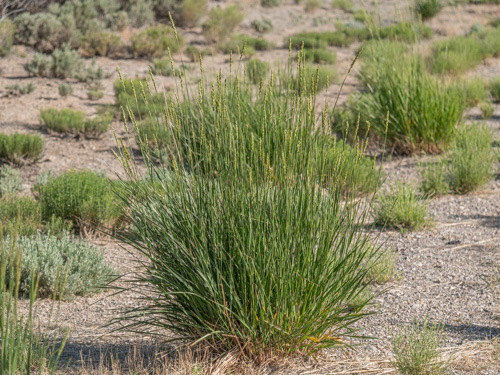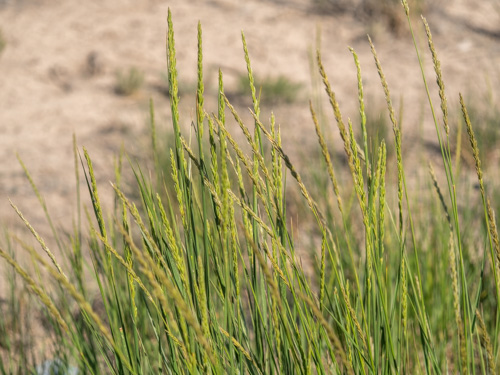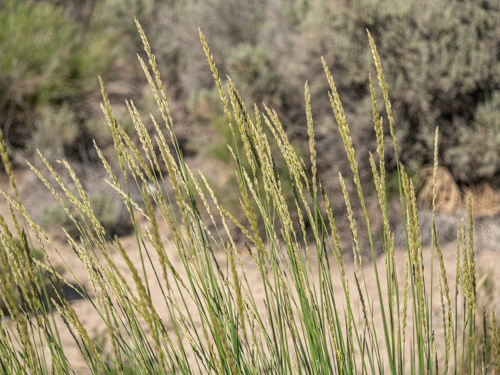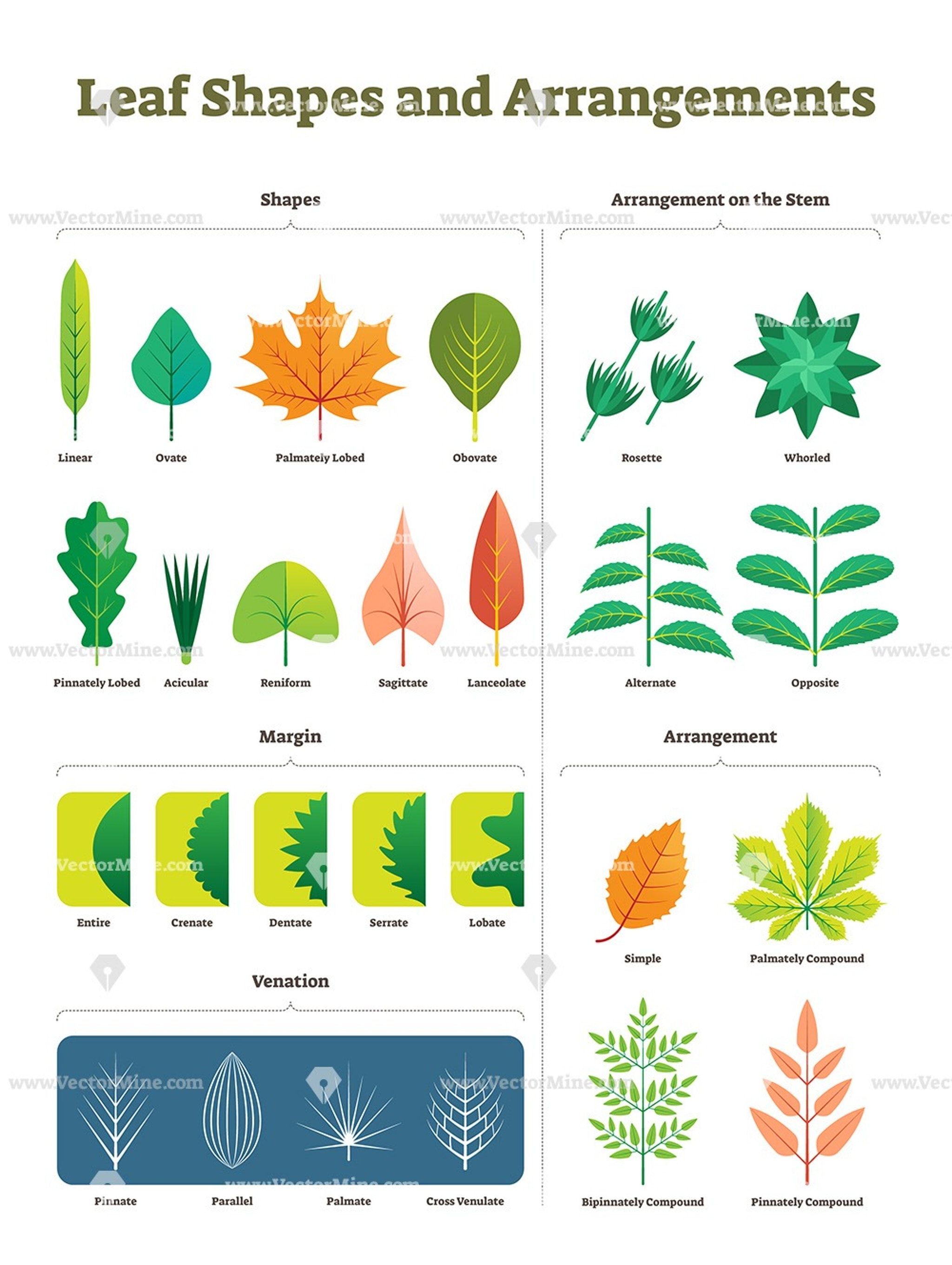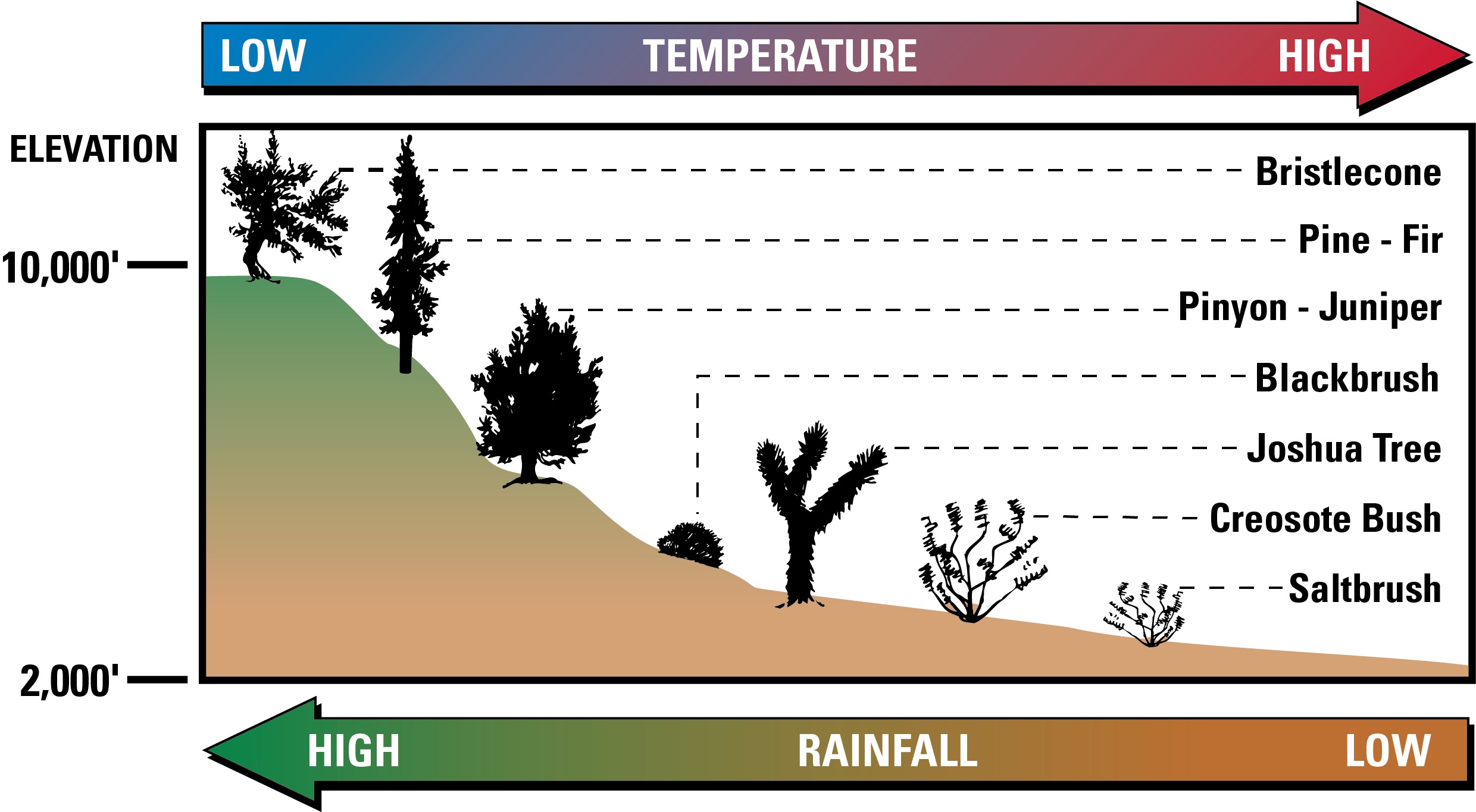Leymus cinereus
Great Basin Wild Rye
An unusually large, robust bunchgrass, usually without rhizomes but with thick tillers. Bunches are 1 to 3 feet in diameter and 2 to 6 feet tall. Starts growth in early spring, seeds mature by August, reproduces from seeds and tillers. The inflorescence is an unbranched, cylindrical spike divided into up to 35 nodes with several flower spikelets per node. Seedhead has numerous, erect, awnless spikes up to 10 inches long, dense and compact; 2 to 4 spikelets at each rachis joint, containing 3 to 6 florets; glumes needle-like. Blades coarse, mostly flat up to ¾ inches wide and 1 ½ feet long; sheaths glabrous; leaves rolled in bud; ligules membranous, collar shaped, and up to ¼ inch long; auricles prominent, clasping. It was an abundant grass, but that is no longer the case. Basin wildrye ecosystems have been severely degraded by fire suppression, timing of grazing, conversion to agriculture, and introduction of nonnative plants.
